A general Bayesian algorithm for the autonomous alignment of beamlines
- PMID: 39466695
- PMCID: PMC11542659
- DOI: 10.1107/S1600577524008993
A general Bayesian algorithm for the autonomous alignment of beamlines
Abstract
Autonomous methods to align beamlines can decrease the amount of time spent on diagnostics, and also uncover better global optima leading to better beam quality. The alignment of these beamlines is a high-dimensional expensive-to-sample optimization problem involving the simultaneous treatment of many optical elements with correlated and nonlinear dynamics. Bayesian optimization is a strategy of efficient global optimization that has proved successful in similar regimes in a wide variety of beamline alignment applications, though it has typically been implemented for particular beamlines and optimization tasks. In this paper, we present a basic formulation of Bayesian inference and Gaussian process models as they relate to multi-objective Bayesian optimization, as well as the practical challenges presented by beamline alignment. We show that the same general implementation of Bayesian optimization with special consideration for beamline alignment can quickly learn the dynamics of particular beamlines in an online fashion through hyperparameter fitting with no prior information. We present the implementation of a concise software framework for beamline alignment and test it on four different optimization problems for experiments on X-ray beamlines at the National Synchrotron Light Source II and the Advanced Light Source, and an electron beam at the Accelerator Test Facility, along with benchmarking on a simulated digital twin. We discuss new applications of the framework, and the potential for a unified approach to beamline alignment at synchrotron facilities.
Keywords: Bayesian optimization; automated alignment; digital twins; machine learning; synchrotron radiation.
open access.
Figures


 , whose true global optima are marked as white circles. Using existing data points (far left) and the assumption that the function is distributed as a GP, we can use Bayesian inference to compute a posterior consisting of a mean (center left) and error (center right), upon which we can compute an acquisition function (far right) which informs us of the best points to sample. The black-edged diamonds superimposed on the acquisition function show the best eight points to sample, optimized in parallel and with the optimal routing represented by the red line.
, whose true global optima are marked as white circles. Using existing data points (far left) and the assumption that the function is distributed as a GP, we can use Bayesian inference to compute a posterior consisting of a mean (center left) and error (center right), upon which we can compute an acquisition function (far right) which informs us of the best points to sample. The black-edged diamonds superimposed on the acquisition function show the best eight points to sample, optimized in parallel and with the optimal routing represented by the red line.

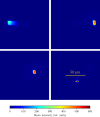
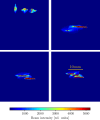

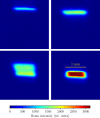
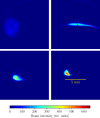

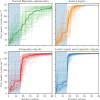
References
-
- Allan, D., Caswell, T., Campbell, S. & Rakitin, M. (2019). Synchrotron Rad. News, 32(3), 19.
-
- Balandat, M., Karrer, B., Jiang, D., Daulton, S., Letham, B., Wilson, A. G. & Bakshy, E. (2020). Adv. Neural Inf. Process. Syst.33, 21524.
-
- Batchelor, K., Ben-Zvi, I., Fernow, R., Gallardo, J., Kirk, H., Pellegrini, C., Van Steenbergen, A. & Bhowmik, A. (1990). Nucl. Instrum. Methods Phys. Res. A, 296, 239–243.
-
- Borland, M. & Blednykh, A. (2018). The Upgrade of the Advanced Photon Source.Technical Report. Brookhaven National Laboratory, Upton, New York, USA.
Grants and funding
LinkOut - more resources
Full Text Sources

